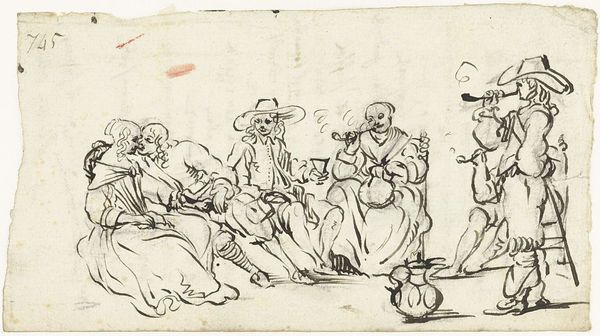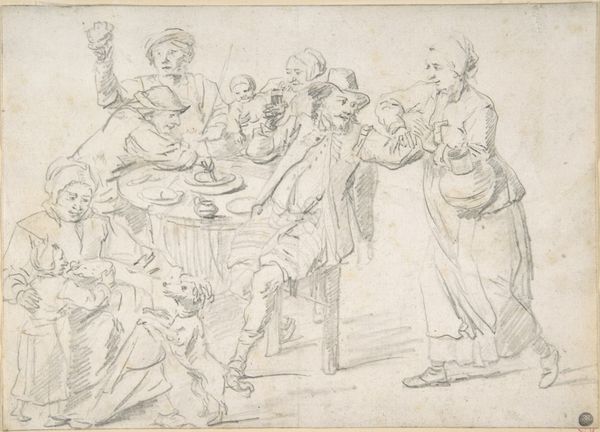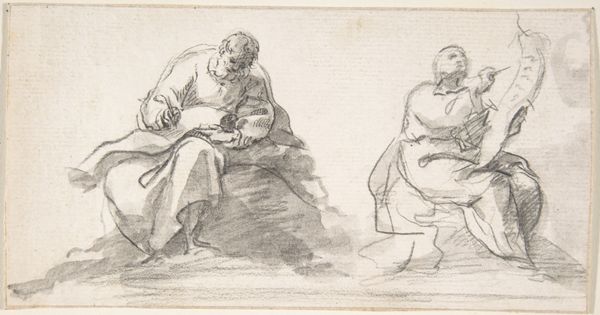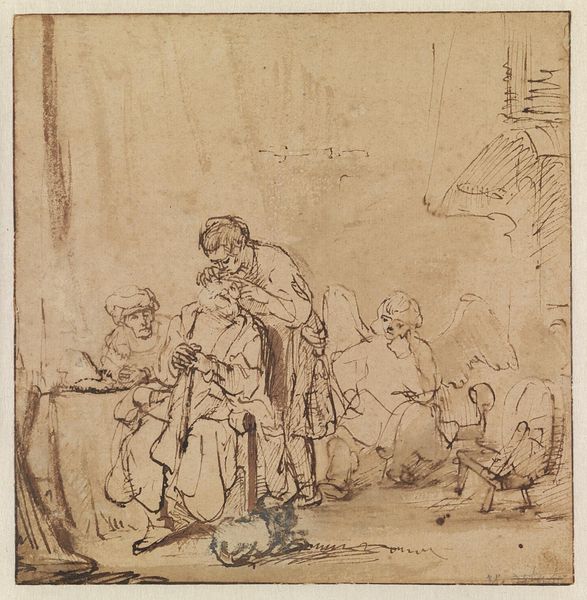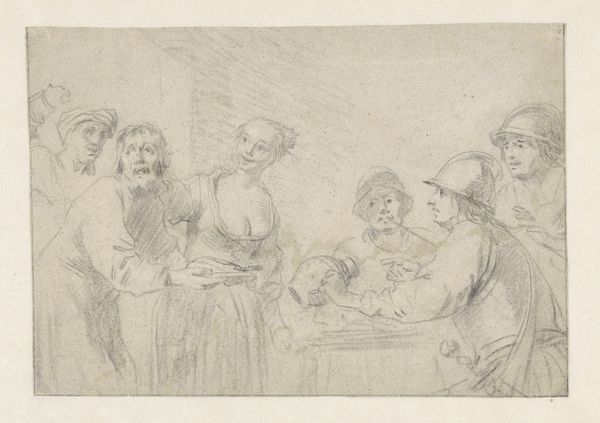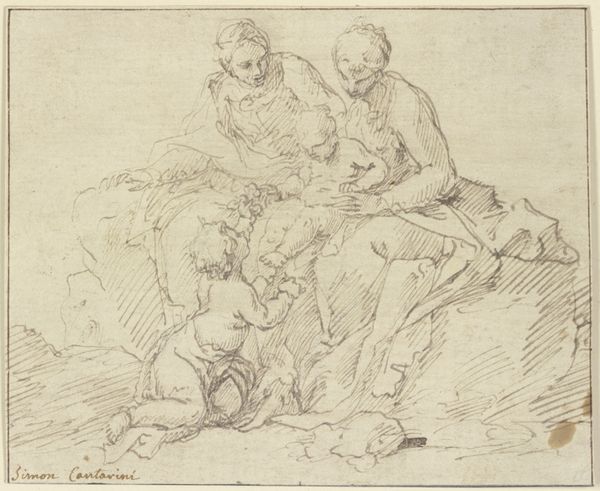
drawing, paper, ink
#
drawing
#
narrative-art
#
dutch-golden-age
#
figuration
#
paper
#
ink
#
genre-painting
Dimensions: height 97 mm, width 156 mm
Copyright: Rijks Museum: Open Domain
Curator: Before us is "Three Peasants at a Table with Three Other Figures," a drawing created by Esaias van de Velde sometime between 1600 and 1630. It's rendered in ink on paper and is currently held at the Rijksmuseum. Editor: It feels spontaneous, like a fleeting glimpse into a bustling tavern scene. There’s a slightly comic energy, despite the roughness of the lines. Is it meant to be humorous? Curator: Van de Velde was working during the Dutch Golden Age, and drawings like this were often studies for larger paintings, or independent works for the art market. Tavern scenes, or genre paintings, were incredibly popular. It's likely meant to capture everyday life, perhaps with a moral message embedded. Editor: I'm struck by the figures themselves. There's a clear hierarchy; the ones at the table, particularly the gesturing man, hold a dominant position. It brings to mind ideas about social gatherings and class distinctions in those tavern scenes. Curator: Absolutely, taverns in the Dutch Golden Age were interesting places socially. You could find a diverse range of people meeting there. But I think the emphasis on their gestures tells a broader story, maybe about communication, maybe about deception or simply people in leisure and community. Editor: The slouching figure in the center, head lolling, definitely speaks of leisure and possibly excess. Notice his relaxed pose in comparison to the straighter lines of the standing figures. It's such a simple yet potent representation of overindulgence or perhaps utter exhaustion. Curator: These observations echo familiar Golden Age narratives and artistic preferences. Van de Velde was a prominent figure in landscape painting, but also clearly adept at portraying figural scenes as social commentary. The Dutch art market catered to middle-class tastes, frequently featuring recognizable characters and scenarios with often thinly veiled symbolism for this population. Editor: Looking closer, the hats worn by each figure are distinct and likely denote some status or role. And even the posture of the men outside the table tell stories. One seems relaxed and patient while the other is actively walking. It brings texture to the scene. Curator: Right, and his placement within that developing art market makes that kind of storytelling necessary and easily digestible for audiences. He needed to balance accessibility with sophistication. These visual elements aided him greatly in creating successful works, and securing patronage or sales. Editor: This brief encounter gives much to consider about how these Dutch images reflected daily experiences. Curator: Agreed, it illuminates a particular strand within that fabric and how genre scenes became mirrors reflecting the culture that consumed them.
Comments
No comments
Be the first to comment and join the conversation on the ultimate creative platform.




